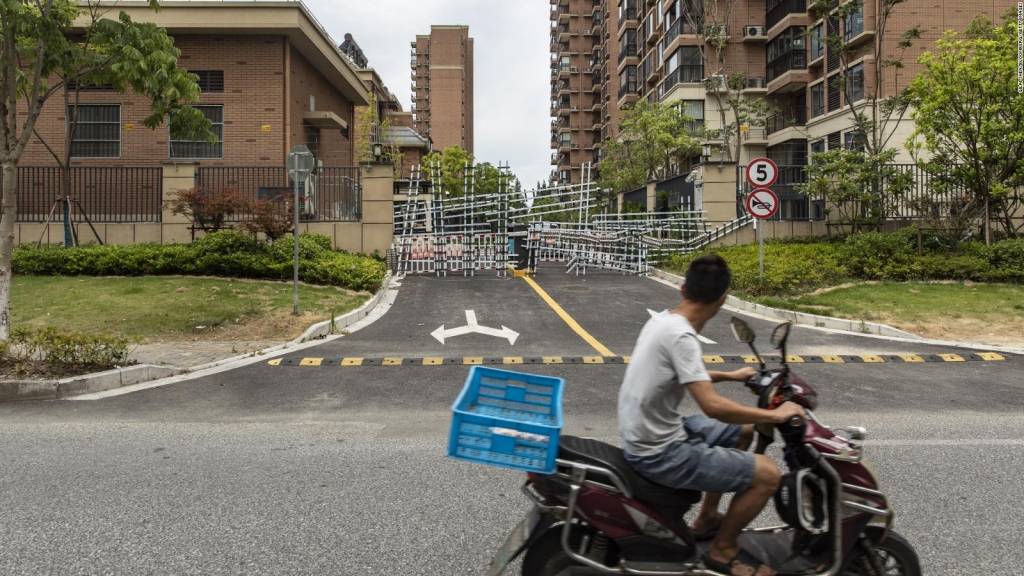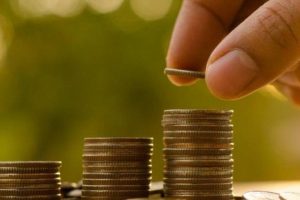( Business) –– China faces the worst quarterly performance of its economy in more than two years, after suffering months of strict covid-19 lockdowns that wreaked havoc across the country.
The gross domestic product (GDP) of the second The world’s largest economy expanded just 0.4% during the three months ending June 30, compared with the same period a year earlier, the National Bureau of Statistics (NBS) reported on Friday. ).
The figure represents a sharp drop from the 4.8% rise China’s economy achieved in the previous quarter, and is well below the 1% growth economists estimated in a Reuters poll. On a quarterly basis, GDP contracted 2.6%.
The worst performance of the Chinese economy since the outbreak in Wuhan
Barricades from the recent COVID-19-related lockdowns block the entrance leading to Country Garden Holdings Co.’s Fengming Haishang residential development in Shanghai, China, on July 12, 2022. (Credit: Qilai Shen/Bloomberg
This is the weakest performance of the Chinese economy since the first quarter of 2020, when the country practically paralyzed all of its activities in the fight to contain the initial coronavirus outbreak that began in the city of Wuhan. During that quarter, GDP contracted 6.8%.
For the first half of this year, the economy expanded by 2.5%. Which is also well below the annual target of 5.5% set by the government. In fact, Beijing admitted on Friday that it would be difficult to achieve its GDP targets in 2022.
“There are various challenges to achieving our expected full-year economic growth target,” Fu Linghui, a spokesman for the NBS, told a news conference in Beijing. However, he noted that his expectation is that the economy will recover in the second half of 2022.
growing challenges
Policymakers in China face increasing challenges in keeping the economy’s growth stable. Precisely, the country is experiencing a sharp slowdown in economic activity due to the strict zero covid-19 policy imposed by Beijing, which is added to a heavy-handed regulation in the private sector and a real estate crisis that has led to an increase in the bad debts in banksya growing social protests.
Since March, Beijing’s uncompromising stance to eradicate the virus has forced months of lockdowns in dozens of cities across the country, including Shanghai, the financial and transportation center of the nation. Millions of residents remained confined to their homes, and shops, restaurants and factories were closed. What harmed the exercise of consumers and disrupted supply chains.
Authorities began reopening the economy early last month, after lifting restrictions in some key cities. Manufacturing and service industries have shown signs of gets better during the last few weeks. However, Beijing’s strong adherence to the goal of zero covid-19 has unleashed great uncertainty among companies and has diminished investor confidence. consumer spending remains weakwhile the labor market is facing significant pressure: youth unemployment reached a new record of 19.3% in June.
A “serious and unexpected blow”
At Friday’s press conference, Fu said the economy took a “serious and unexpected” hit from both internal and external factors.
The global increase in the prices of raw materials, especially food and energy, add to the inflation imported. And the growing risks of stagflation across the globe also threaten China’s economic stability, Fu warned.
The poor performance in the second quarter “reflected significant impacts from the omicron outbreak and corresponding strict measures in major cities,” said Chaoping Zhu, Shanghai-based global market strategist for JP Morgan Asset Management.
“Looking ahead, we expect to see a continued economic recovery in the second half of this year, supported primarily by investment in infrastructure led by the government,” he said. He also added that if the government further eases Covid-19 restrictions, consumer confidence could recover at a faster pace.
But the real estate sector may still pose a downside risk to growth, Zhu noted.
Larry Hu, chief China economist at Macquarie Group, explained that recent data shows China’s GDP growth needs to accelerate to more than 7% in the second half of 2022 to deliver 5% annual growth for the full year. .
“That is impossible without a significant increase in stimulus policies from the current level,” he concluded.
Some good news about China’s economy
Now, there was good news in the data on the Chinese economy this Friday.
Mining and manufacturing registered a growth of 0.9%, compared to the second quarter of last year. And retail sales in June grew 3.1% from a year ago, buoyed by a surge in auto sales that was due to pent-up demand and policy support for electric vehicles. Industrial production also recovered in June, with 3.9% more than a year ago.
Real estate investment plummets
For its part, the vast real estate sector remains a major burden.
Real estate investment plunged 9.4% in June from a year earlier, after posting a 7.8% drop in May, according to calculations by Macquarie Capital based on government data. Property sales by square footage were down 18% last month, following a 32% decline in May.
“The drop in sales means that developers are facing a liquidity crisis,” Hu explained.
“The property problem is causing increasing social instability, which is evident in the recent mortgage boycott,” he added.
Desperate homebuyers have refused to pay mortgages on unfinished homes in dozens of cities in recent days. The boycott comes as a growing number of projects have been delayed or stalled due to a cash crunch that caused developer giant Evergrande to default on its debt last year and several other companies to seek protection from creditors.
Zhu of JP Morgan Asset Management said the growing number of unfinished homes poses a big risk to the financial health of banks.
“Decisive and effective regulatory measures must be taken to prevent the mortgage boycott from becoming a systemic risk,” he insisted.















Add Comment